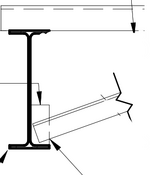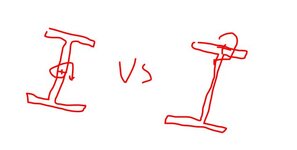Hi,
These are roof beams, but on some loading cases (lateral) there are compression forces in these members. These members are fine for its major axis bending action and gravity deflection, however, because of the length and the minor axis (ry) value, the slenderness limit exceeds 200 and get a failure in the program (Staad).
I have detail attached with L-angle braces from the W-beam going back to roof diaphragm at mid-spans and can even use a full depth stiffener there. Could these be counted to reduce the unbraced length in minor axis compression to half of the span to get the slenderness limit less than 200 or is there anything that you do to counteract similar situation.
Your thoughts are highly appreciated.
Thank you
These are roof beams, but on some loading cases (lateral) there are compression forces in these members. These members are fine for its major axis bending action and gravity deflection, however, because of the length and the minor axis (ry) value, the slenderness limit exceeds 200 and get a failure in the program (Staad).
I have detail attached with L-angle braces from the W-beam going back to roof diaphragm at mid-spans and can even use a full depth stiffener there. Could these be counted to reduce the unbraced length in minor axis compression to half of the span to get the slenderness limit less than 200 or is there anything that you do to counteract similar situation.
Your thoughts are highly appreciated.
Thank you




